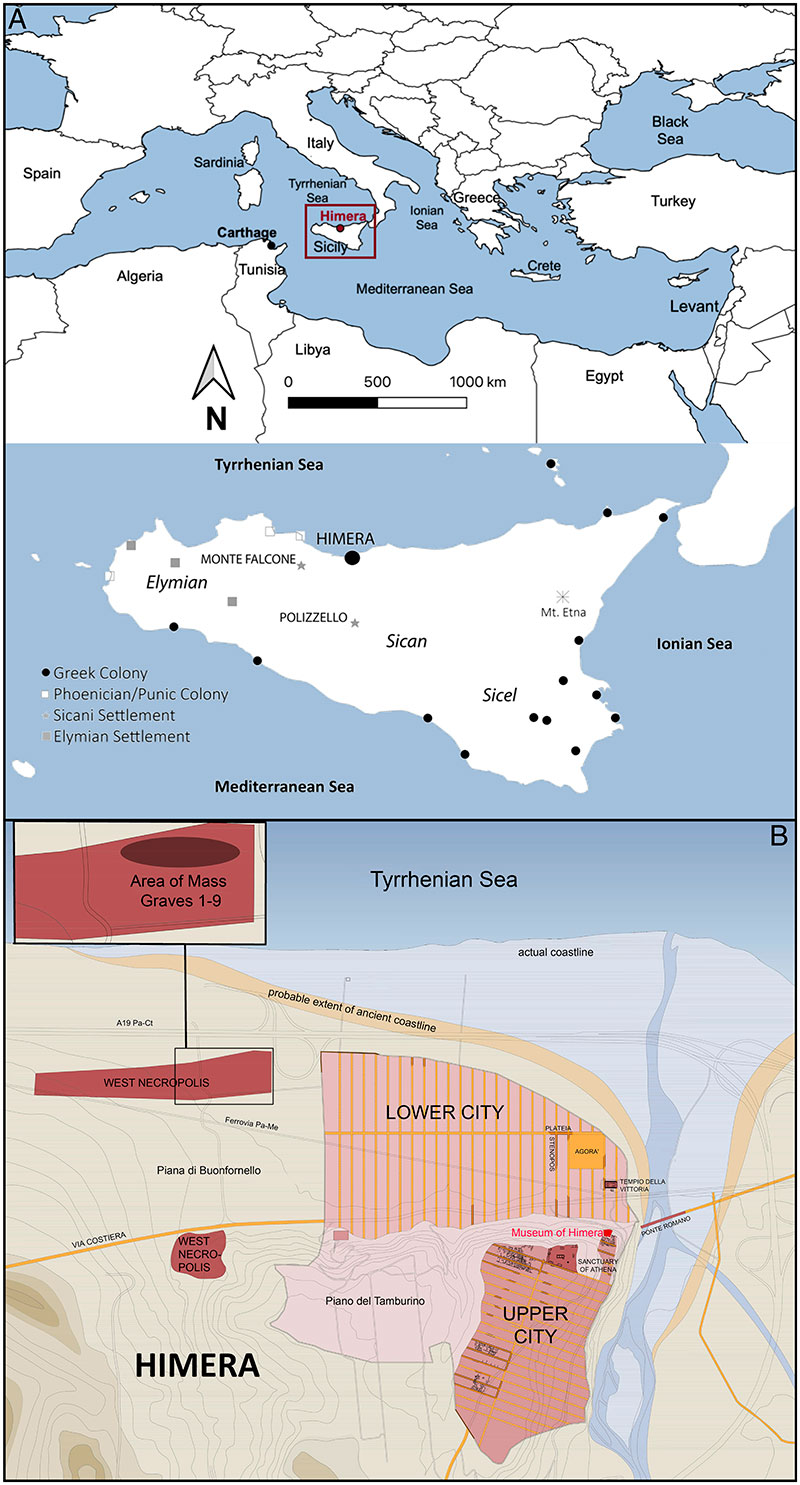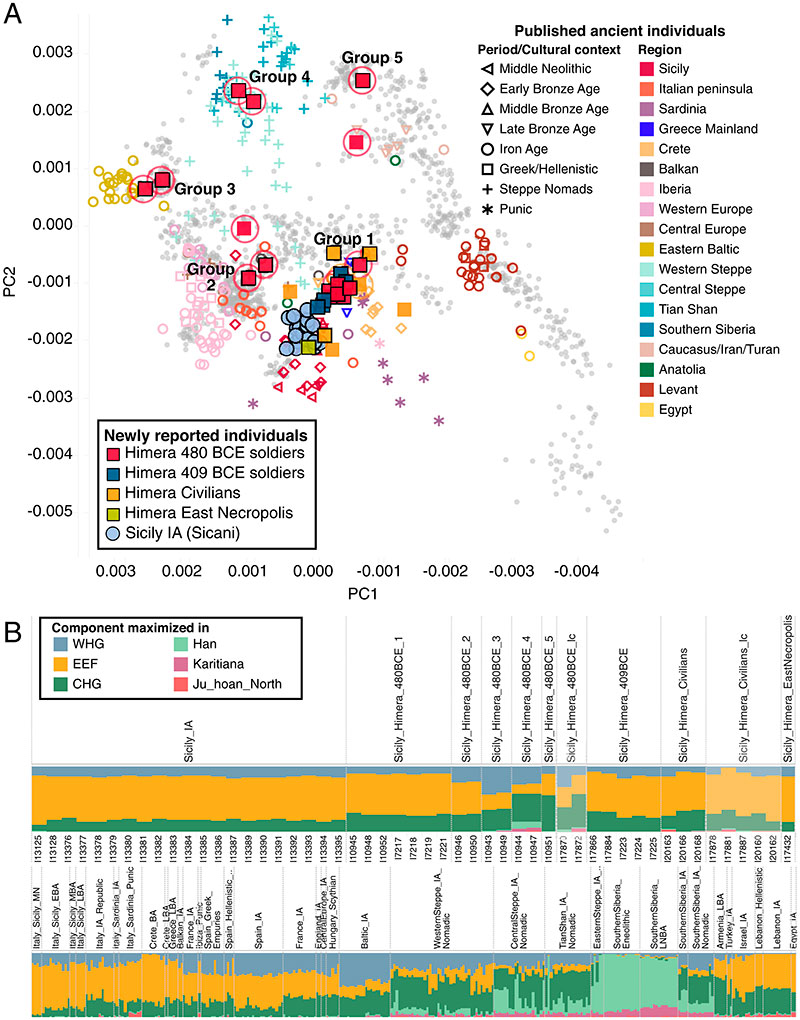The study of ancient DNA showed that the ancient Greeks used mercenaries from Northern Europe. The ancient Hellenes from time to time used mercenaries from very remote places in their army.
Warriors and mercenaries played an important role in the large-scale movement of people in the classical ancient Greek world of the Mediterranean. Here’s what an international, multidisciplinary team of geneticists and other scientists found when they analyzed the DNA of people from the Greek colonies in Sicily.
Led by eminent researcher David Reich of Harvard Medical School, the team has published in the Journal of the US National Academy of Sciences (PNAS). Greek scientists also participated in the study, including Reich’s colleague Joseph Lazaridis and Professor Ioannis Stamatogiannopoulos of the University of Washington.
Scientists analyzed the genomes of 54 human skeletons found, some with weapons, in mass graves in and around Himera (Imera) necropolises.
Among them were warriors who lived in the 5th century. BC, aged 18-50, who fought in the army of the Greek northern Sicilian colony Himera (in the decisive battle for the Greeks in 480 BC, victorious against the Carthaginians and their local allies), as well as civilians in the area and nearby settlements with indigenous people. In addition, for comparison, the genomes of 96 modern humans from Italy, mainland Greece and Crete were analyzed.
The analysis showed a significant presence at the Battle of Himera of mercenaries from northern and central Europe (even from the eastern Baltic in the area of modern Lithuania), the steppes and the Caucasus, who fought on the side of the Greeks and probably helped turn the tide of the battle in favor of the latter.
Scientists emphasized that reports of the presence of mercenaries from such distant places at that time already at the beginning of the 5th century BC. missing in historical texts, and this issue has so far been underestimated by historians and archaeologists. That is why, they noted, it is necessary that archaeological and historical research concerning the ancient Greek world be gradually supplemented by an increasing number of paleogenetic studies, since ancient DNA can shed new light on the past.
The researchers concluded that armed conflicts functioned as an important mechanism of contact between very different cultures, facilitating osmosis between them and their assimilation into the ancient Greek world. The researchers emphasized that “the mercenaries were among the most distant travelers of the Greek world (perhaps in this they competed only with slaves), bringing people from very different cultural and genetic backgrounds face to face”:
“In addition to the Greek colonists and the indigenous peoples they encountered there, mercenaries were part of the exchange of culture, ideas and possibly genes that took place in the Greek cities of the first millennium BC, and in some cases they may have played an important role in ensuring Greek military victories”.
The researchers noted that the results add to the picture that has existed so far based on archaeological and historical evidence, supporting the idea that mercenaries in the Greek armies of the classical period were an instrument of cultural change and a vehicle for gene transmission in the wider Mediterranean area.
Although wars are usually seen as a divisive force, in fact – according to researchers – they were an additional catalyst for demographic change and cross-cultural contact, along with trade and colonization migrations from mainland Greece to other places such as southern Italy and Sicily.
Himera, or Imera in Greek, was a large and important ancient Greek city located on the northern coast of Sicily at the mouth of the river of the same name (modern Imera Settentrionale), between Panormos (modern Palermo) and Cefaloedia (modern Cefalu), in the commune of Termini Imerese.

The colony was founded by the Ionians and Dorians around 648 BC, and probably also inhabited by native Sicilians, Etruscans, and others. It was the westernmost Greek settlement in northern Sicily and the site of two important battles (480 and 409 BC). BC) between the Greeks and the Carthaginians. In the second battle, in which Imera fought without allies, the Carthaginians prevailed, destroying the city.
A new study has confirmed that the dead warriors of 409 BC. had very similar DNA and there was no evidence of mercenaries, which likely played a role in the defeat of the Greek colony.
Original publication: The Diverse Genetic Origins of the Greek Army of the Classical Antique Period.







More Stories
The Olympic flame began its journey to Marseille on the sailing ship Belen
Butter babies "lazarakia"
Olympic torch relay: traffic restrictions in Athens and Attica on Friday